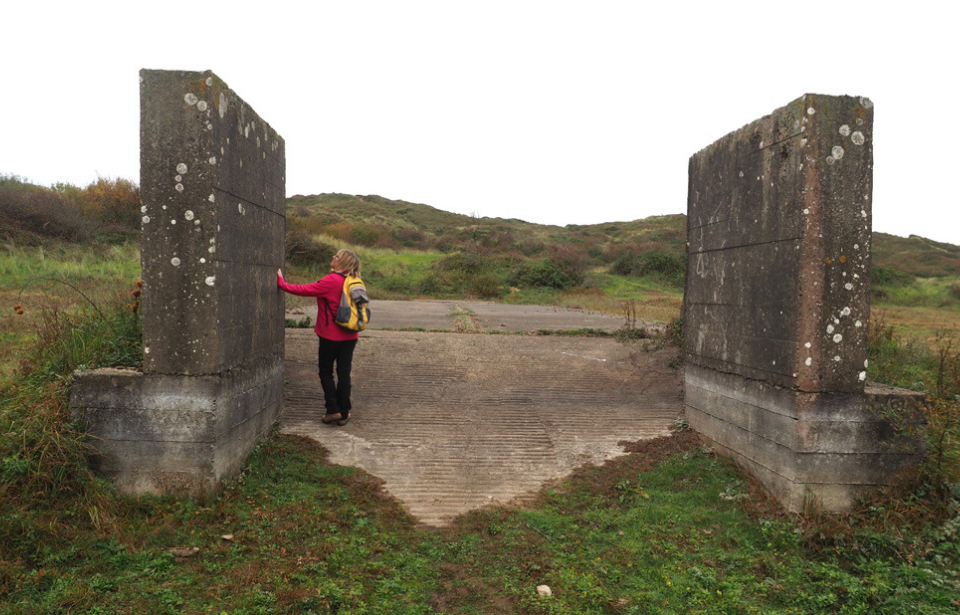A series of holiday beaches in Devon, in the United Kingdom, were once vital training grounds that contributed to the success of D-Day. This is popular excursion destination in the west country, that plays host to surfers, beachgoers and sun worshipers alike, told a very different story during World War II.
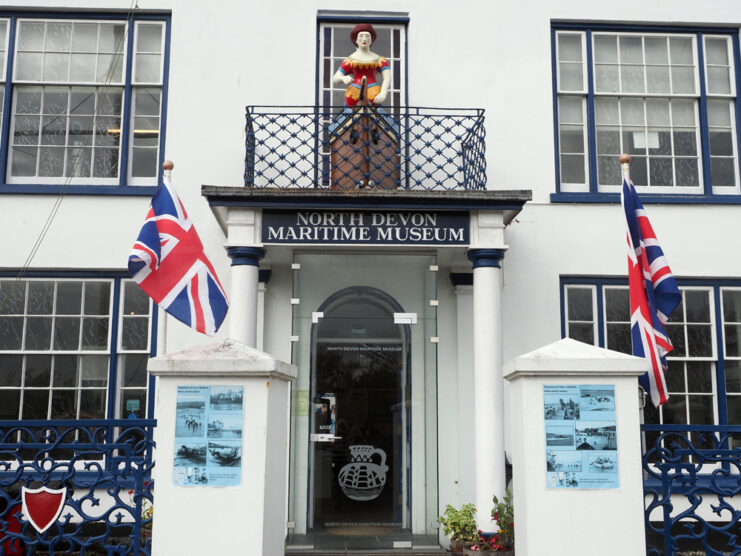
The sandy beaches north of Devon, at places like Westward Ho, Saunton and Woolacombe, were where American, Canadian and British soldiers trained prior to June 6, 1944. The villages of Instow and Appledore, on the junction of the rivers Taw and Torridge, became hubs for the massive influx of men and machines of war. Tens of thousands of troops passed through some of these tiny coastal areas, boosting their populations many times over.
Most of the operations carried out there were, at that time, secret. With special forces training and the testing of key new weapons and ideas, they were planning how to get ashore safely and quickly on the beaches of northern France – although, at the time, it was thought those invasion beaches may be those opposite Kent and Sussex, an assumption the Allies were certainly keen to push.
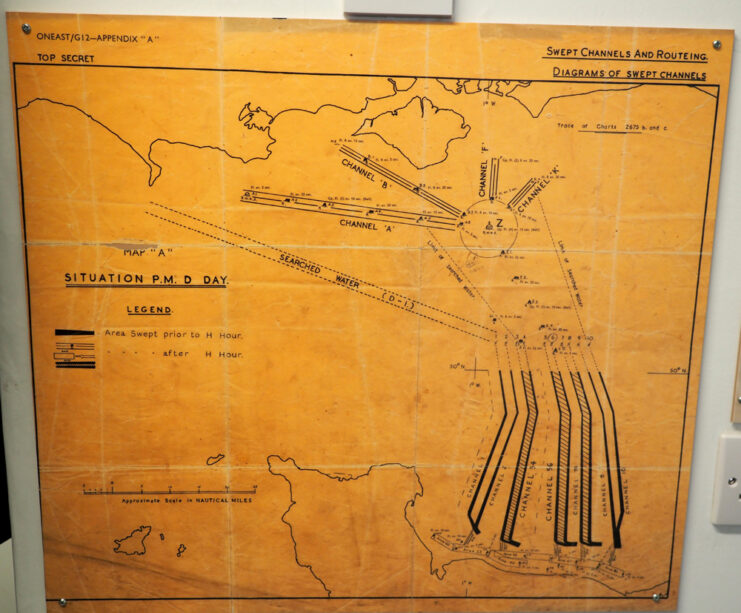
The nearby small port town of Bideford played its part, too. One special building on the side of the River Taw became a hub for important planning meetings that, at times, included British Prime Minister Winston Churchill, along with the senior generals and commanders of many different Allied military units.
The Royal Hotel had an entrance door opening onto station platform, which made it easy for Churchill and these generals to step right off the train and enter the building without being noticed. This now-listed property hosted planning meetings and certainly contributed to the overall success of D-Day. A Combined Operations plaque is proudly displayed in its main restaurant.
The estuary of the rivers Taw and Torridge was also part of the extensive training area, including dunes, beaches and a site called Braunton Burrows. Much of the area had just local people living there, and even evacuees weren’t generally sent there, keeping it local, so to speak.
Concrete LCT (landing craft, tank) replicas for driver instruction were constructed by the training naval and army forces, deep in the dunes located there. Still visible today, six concrete access ramps and LCT bow sections provided a perfect training and tank loading facility well out of the way of prying eyes.
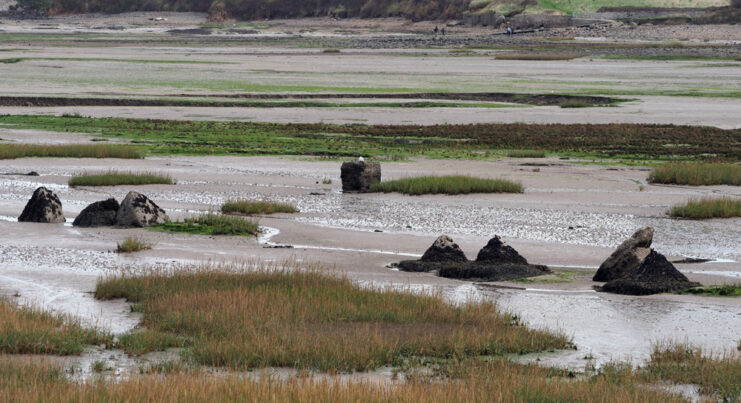
Westward Ho was an area for testing experimental vehicles, as behind it was the Northam Burrows, a coastal rough grassed area. At one time, it did have the RAF radar station Chain Home tower located there, too.
Nearby, the fishing village of Appledore was the site of COXE – the Combined Operation Experimental Establishment. It was here that training took place for Frogmen like Royal Marine Keith Briggs, who was trained to clear obstructions on June 6. Using by today’s standards rather crude rubber suits developed by Dunlop, Keith trained in the river twice a day and at a nearby swimming pool, trialing oxygen tanks and masks.
Keith went on to be part of the top secret Landing Craft Obstruction Clearance Units (LCOCU) training at what was called HMS Appledore at the time. For D-Day itself, he was assigned to the Canadians landing at Juno Beach, where his landing craft hit an obstruction and sank, leaving them no choice to abandon it and get ashore. Once ashore and sheltering from sniper fire, he and his team swam out to lay charges to clear the other obstructions and mines.
In the end, they cleared or made safe over 100 charges, for which Keith was awarded a Distinguished Service Medal. His medals and green beret are on display at the North Devon Maritime Museum in Appledore, where a wealth of information can be found not only about COXE, but also the remarkable maritime history of the area, too.
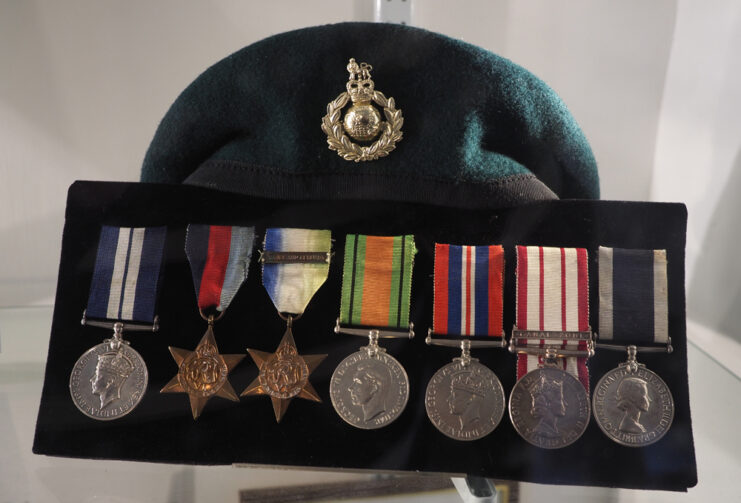
The museum also has a display of secret maps were used on June 6. They clearly show safe routes across the English Channel to northern France and the routes various craft should take to make either a safe transit or await in holding areas. These were donated by the family of Lt. Bruce Porter, who was aboard LCT-931 on D-Day. He conducted 28 troop and vehicle ferrying trips to Gold Beach.
One story he repeated was that the American troops had superior equipment. That being said, while the British method was cheap and cheerful, it did work better from the offset. Their lifebelts were modified bicycle inner tubes, whereas the Americans had neat inflation belts around their waists. When deployed in deep water, the latter’s often made them turn turtle, thanks to the weight of their backpacks, so picking up drowned soldiers was sadly their responsibility, too.
Once they were moved up to under the arms, they improved their worth, he said.
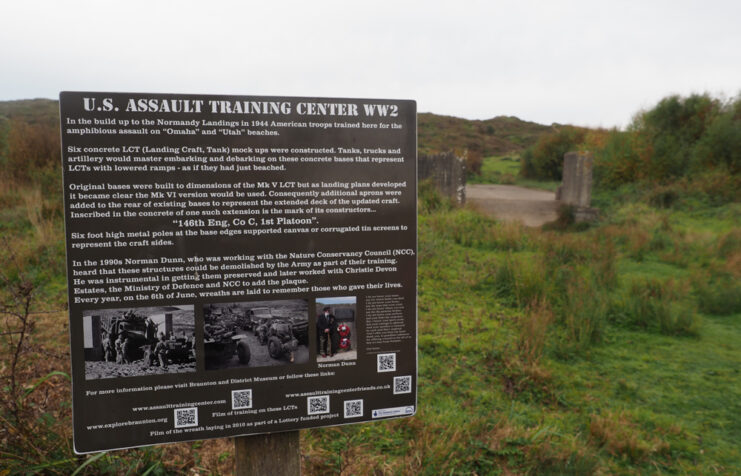
Testing of a whole range of different systems was carried out at places like Westward Ho, like the panjandrum, the infamous 10 foot diameter wheel system they hoped would get released from a landing craft, run up the beach, and breach defensive walls or obstructions.
Designed from an idea put forward by the author Neville Shute, it was tested by COXE, but it never went into production for the invasion.
More from us: World War II-Era German Bunker Found Beneath Couple’s Home
Geoff stayed at the Royal Bideford in North Devon during this trip.
For anyone really interested in investigating more about this whole area and its wartime history, it is explorable by walking and by bike, using part of what is called the Tarka Trail and public footpaths around the estuary area. In the summer, there are ferry boats operating between Appledore and Instow.
